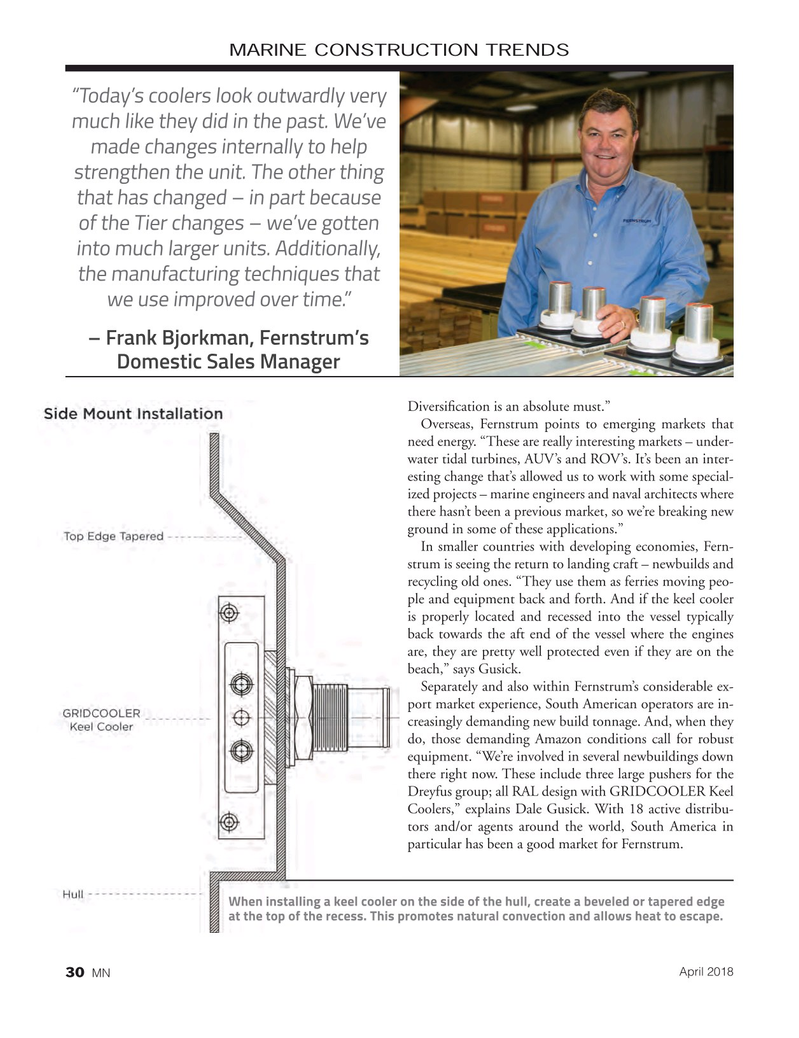
Page 30: of Marine News Magazine (April 2018)
Boatbuilding, Construction & Repair
Read this page in Pdf, Flash or Html5 edition of April 2018 Marine News Magazine
MARINE CONSTRUCTION TRENDS “Today’s coolers look outwardly very much like they did in the past. We’ve made changes internally to help strengthen the unit. The other thing that has changed – in part because of the Tier changes – we’ve gotten into much larger units. Additionally, the manufacturing techniques that we use improved over time.” – Frank Bjorkman, Fernstrum’s
Domestic Sales Manager
Diversi? cation is an absolute must.”
Overseas, Fernstrum points to emerging markets that need energy. “These are really interesting markets – under- water tidal turbines, AUV’s and ROV’s. It’s been an inter- esting change that’s allowed us to work with some special- ized projects – marine engineers and naval architects where there hasn’t been a previous market, so we’re breaking new ground in some of these applications.”
In smaller countries with developing economies, Fern- strum is seeing the return to landing craft – newbuilds and recycling old ones. “They use them as ferries moving peo- ple and equipment back and forth. And if the keel cooler is properly located and recessed into the vessel typically back towards the aft end of the vessel where the engines are, they are pretty well protected even if they are on the beach,” says Gusick.
Separately and also within Fernstrum’s considerable ex- port market experience, South American operators are in- creasingly demanding new build tonnage. And, when they do, those demanding Amazon conditions call for robust equipment. “We’re involved in several newbuildings down there right now. These include three large pushers for the
Dreyfus group; all RAL design with GRIDCOOLER Keel
Coolers,” explains Dale Gusick. With 18 active distribu- tors and/or agents around the world, South America in particular has been a good market for Fernstrum.
When installing a keel cooler on the side of the hull, create a beveled or tapered edge at the top of the recess. This promotes natural convection and allows heat to escape.
April 2018
MN 30
MN April18 Layout 18-31.indd 30 MN April18 Layout 18-31.indd 30 3/23/2018 9:21:10 AM3/23/2018 9:21:10 AM

 29
29

 31
31
